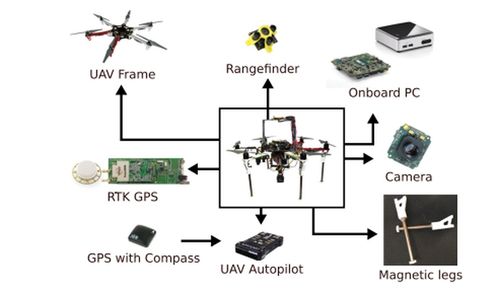Title: Integrating Blockchain Technology into Unmanned Aerial Vehicle (UAV) Control Systems
In recent years, the integration of blockchain technology into various industries has gained significant attention, and the realm of unmanned aerial vehicles (UAVs) is no exception. This innovative fusion holds the potential to revolutionize UAV control systems, enhancing security, transparency, and efficiency in drone operations. Let's explore how blockchain can be leveraged in UAV control systems and its implications.
1. Enhanced Security:
Blockchain's decentralized and immutable nature can fortify UAV control systems against cyber threats and unauthorized access. By storing flight data, authentication credentials, and access logs on a distributed ledger, the system becomes inherently more resilient to hacking attempts and data tampering. Each transaction or command recorded on the blockchain is encrypted and verified by multiple nodes, ensuring the integrity and security of the information.
2. Transparent and Trustworthy Operations:
Transparency is crucial in UAV operations, especially in industries like logistics, agriculture, and surveillance. Blockchain facilitates transparent and auditable records of flight paths, payload deliveries, and maintenance history. This transparency fosters trust among stakeholders, such as regulatory authorities, clients, and the general public, by providing verifiable proof of compliance with regulations and operational standards.
3. Immutable Flight Data:
Flight data integrity is paramount for safety and accountability in UAV operations. Traditional centralized systems are vulnerable to data manipulation or loss, compromising the reliability of flight records. By leveraging blockchain, flight data can be securely recorded in a tamperproof manner, ensuring its immutability and traceability. This immutable audit trail of flight data can be invaluable for accident investigation, regulatory compliance, and performance analysis.
4. Smart Contracts for Automation:
Smart contracts, selfexecuting contracts with predefined conditions written in code, can automate various aspects of UAV operations, such as flight permissions, payments, and maintenance scheduling. For instance, smart contracts can facilitate automatic verification of flight clearances based on predefined criteria, streamlining the approval process and reducing administrative overhead. Moreover, smart contracts can enable automatic payments for drone services upon completion of specified tasks, enhancing efficiency and eliminating intermediaries.
5. Decentralized Flight Management:
Traditional centralized flight management systems may encounter scalability issues and single points of failure, especially in environments with a high volume of UAV traffic. Blockchain enables the development of decentralized flight management platforms where multiple stakeholders can interact peertopeer without reliance on a central authority. This decentralized approach distributes the computational load and enhances system resilience, ensuring uninterrupted UAV operations even in congested airspace.
6. Privacy and Data Ownership:
With concerns over data privacy and ownership becoming more prominent, blockchain offers solutions to empower users with control over their data. UAV operators can utilize blockchainbased identity management systems to grant selective access to flight data and sensitive information, ensuring that data ownership remains with the rightful owners. This not only enhances privacy protection but also fosters greater transparency and accountability in data sharing practices.
Conclusion:
Integrating blockchain technology into UAV control systems holds immense promise for transforming the way drones are operated, managed, and regulated. By enhancing security, transparency, and automation, blockchain can address many of the existing challenges in UAV operations while unlocking new opportunities for innovation and collaboration across industries. However, successful implementation will require close collaboration between stakeholders, robust regulatory frameworks, and ongoing advancements in blockchain scalability and interoperability.

This convergence of blockchain and UAV technology represents a significant step towards realizing the full potential of autonomous aerial systems in the digital age.
标签: 无人机控制区块链系统设计 无人机管制系统 无人机控制终端







